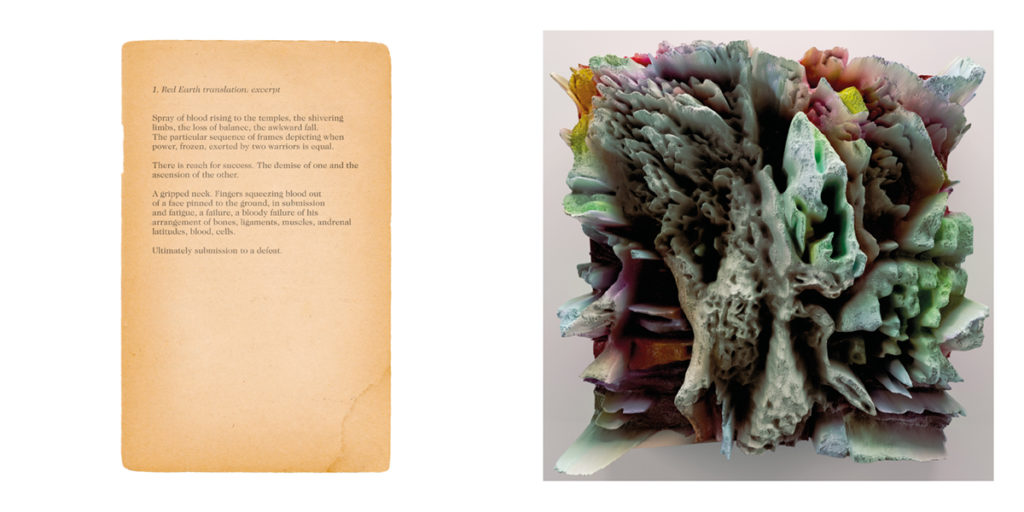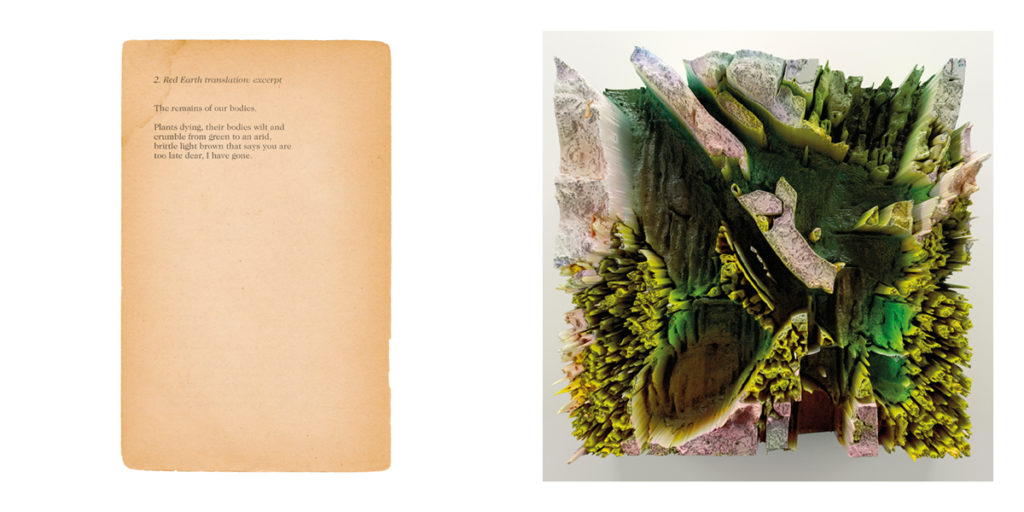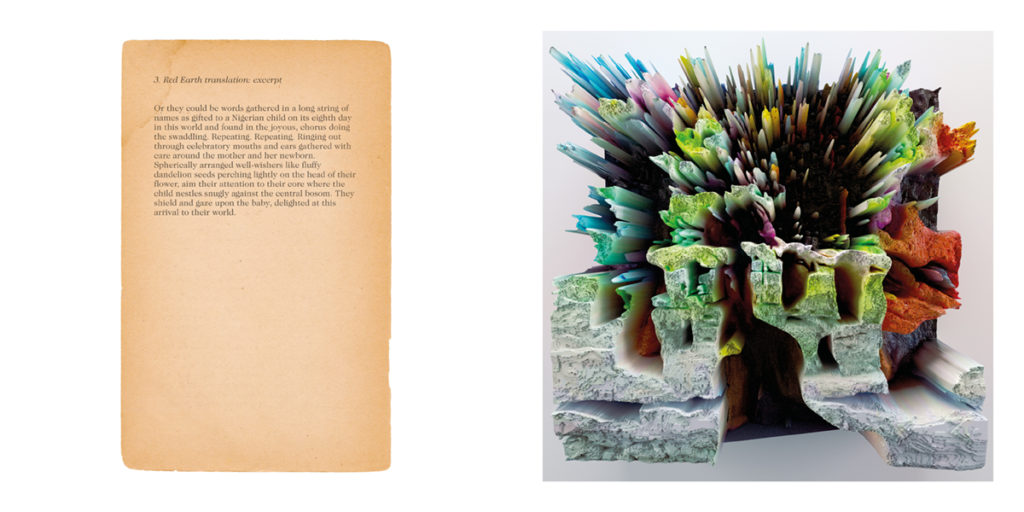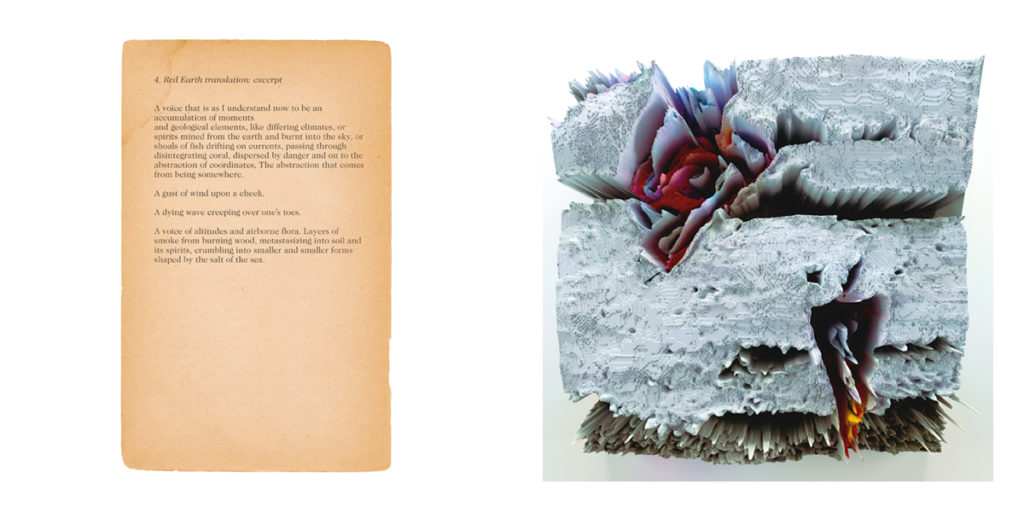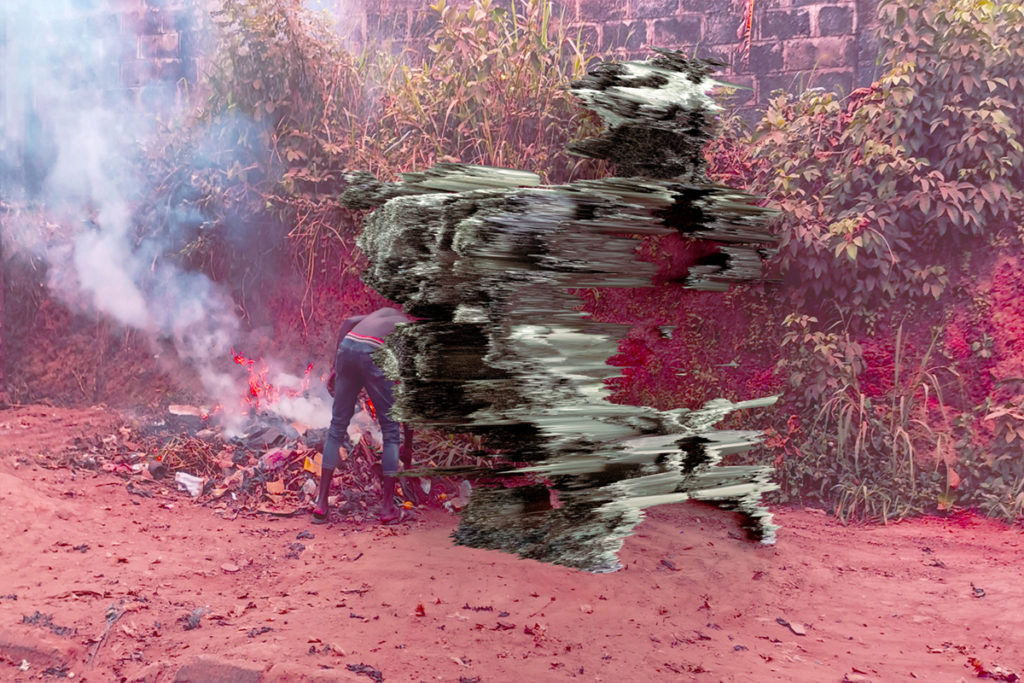
Red Earth (excerpt)
The Vestibule looks out with an open face, reverent towards our wondrous portion of the universe as it can be experienced through the limitations of words, voices, and in this case, my voice.
So with this as the first of (we hope) many shows, permit me some oratorical indulgence.
If not me, then at least permit the voice granted to me, as it has travelled far to be here.
A voice that is — at least as I understand now in this frozen frame — to be an accumulation of moments and geological elements; like differing climates, or spirits mined from the earth and burnt into the sky, or shoals of fish drifting on currents, passing through disintegrating coral, dispersed by danger and on to the abstraction of a coordinate—the abstraction of being somewhere.
A gust of wind upon a cheek.
A dying wave creeping over one’s toes, another death following closely behind.
A voice of altitudes and airborne flora, soon accompanied by layers of smoke from burning wood, metastasising into soil and its spirits, crumbling into smaller and smaller forms shaped by salt from the sea.
It always feels like my voice’s timbre is where accumulative vibrations are held, to be found in each word, some of which I may have felt from a song sung through the dome of my mother’s womb.
The song may have been a jazz singer’s cry straining through some crackling speakers, a ghostly spec of textures past, while I made preparations within. Her words sprinkling an unborn with anguish and defiance potent to the degree that propelled such a fiery desire to live in full.
These are words that could even have negotiated a path from the small television central to a living room to nestling within my memories.
Words that watched with interest while memories disassociated from the physical objects I would assign to them; like a photograph or a brooch or a toy car—into compressed and uninhabited frames instead. Ghoulish, programmatic husks of being. Rise, rise like William Blake’s The Soul Hovering over the Body Reluctantly Parting with Life unwilling yet to leave. Instead, these memories lead me to a different way of existing, one I will not again consult, becoming something virtual and away from me to nothing.
External memories lie dormant, no longer recalled, but exist as trace remains of words I can find to hopefully shape into something new.
Like words spoken beneath a Paw-paw tree where my mother might have stood as a young girl, gossiping with her friends about what occurred during last night’s party.
Where the sound system crackled and the bass it proffered gave the unlit earth a noticeable hum and voices scattered out through the dark, the occasional flash of a lighter catching a bright smile.
Or they could be words gathered in a long string of names as gifted to a Yoruba child on its eighth day in this world and found in the joyous chorus holding the child aloft. Repeating. Repeating. Ringing out through celebratory mouths and ears gathered with care around the mother and her newborn.
Well-wishers arrange themselves spherically like fluffy dandelion seeds perched lightly on the head of their flower, and their attention is drawn inward, where the child nestles snugly against the bosom at the centre. They shield the baby and guide the new world’s gaze, delighted at this arrival.
This child will remain nameless until its eighth day of breathing this air, as the child is not yet of this new world and is waiting in the vestibule, amid goodbyes to the previous world.
I imagine how those eight days can quickly slip through one’s grip. The first might well up remote awareness of an end becoming a possibility, or at least a change, a rupture, but on this first day, it is an end distant enough for the child and those they share moments with, to dance in the joy of now.
So they will enjoy the sharp dry rosé from an elegant bottle with a long curved neck like a swan.
They’ll bring a fresh salad to a garden table dressed wantonly by leaves fallen from the olive tree, sheltering them a little from the season.
Another day might lead them on a light walk away from their grounds. A walk that would take them deep into the surrounding forest, their necks warming under dappled rays from a sun hotter and less inhibited than they have ever known it to be.
They could pause a moment on their backs amongst long grasses central to a clearing of tall trees and tilt their heads up to look at what is above.
The unborn child might then be hit with a sudden and yet profoundly simple revelation; that this new world they are to enter exists upside down.
Everything does.
The trees; monuments fixed to the spherical surface of the earth.
The oceans; housing all manner of life we’ve yet to meet.
How we sprout out like trees from this layered sphere of materials; architectural mimesis, possibly, to tiny organisms ogled under a microscope.
Just like the earth’s clusters of respiratory apparatus jutting outwards, the reaching tendrils of an organism floating in the preservation fluid of the universe, orbiting its life force at speed.
The child would keep this sudden discovery to themselves, thinking about how gravity can pin us down against this hurtling rock and transform how and what we perceive.
They would think about how gravity can hold a vast ocean in place, as it does our illusory existence above ground, and where we fall and become a food source when our bodies crumble in death, is a story that can only be a fallacy.
The child will discover that things, in fact, are the other way around to how we insisted this story is to be told and in the cold truth of language, a browning, crisping, disintegrating corpse does rather instead float upwards; tiny fragments that rest on the top layer of earth, a layer of the dead, feeding the new life to come.
Will this corpse then join the cosmos itself? Will it watch its own dispersal into all that is above, absorbing its tiny grains, its shedding skin as continuity of being?
Soon it would be time for the child to say goodbye. Silence will befall those the child will leave behind.
Even a suitcase belonging to the child will express defiance. An errant trouser leg will martyr itself, obstructing closure, only to delay the inevitable, but this is not a sign.
Voices overlap, selfhood shifts. Caught in the physical multiplicity of a flock of birds lifting off together, their wings sometimes overlapping, whirling up powerful physics of a collective, taken forward in motion onto aerodynamic drag. Here some will lead, and others will gratefully follow, clutching at the simpler air provided to them as they head southward and away from the sparsely populated grounds beginning to dampen and freeze, down to warmer lands, passing over the Mediterranean coastline, where lying at the bottom of this sea among the furry rock, lie stories; loves, grief and grievances of the past, in the bones of Phoenicians or Mesopotamians. Shards from the hulls of ships just out of the seabed, pointing at all that is yet to occur.
Decanted from mercenary vessels, bodies of darker hues clamber and fret their way through the turbulent waters to the shore. Gulps of seawater hasten their exhaustion. They glimpse the sandy beach, bright, yellow and vacant on the horizon. Their salted limbs gain in weight, and their resolve diminishes into a million tiny pieces of rock, millions of years of erosion held within.
Some drag themselves onto the tiny grains of bodies past. Some float to dry land or onto countless pieces of crustaceans that have fought battles and self-amputated limbs for survival, as a defence against fallibility, to then regrow and regroup.
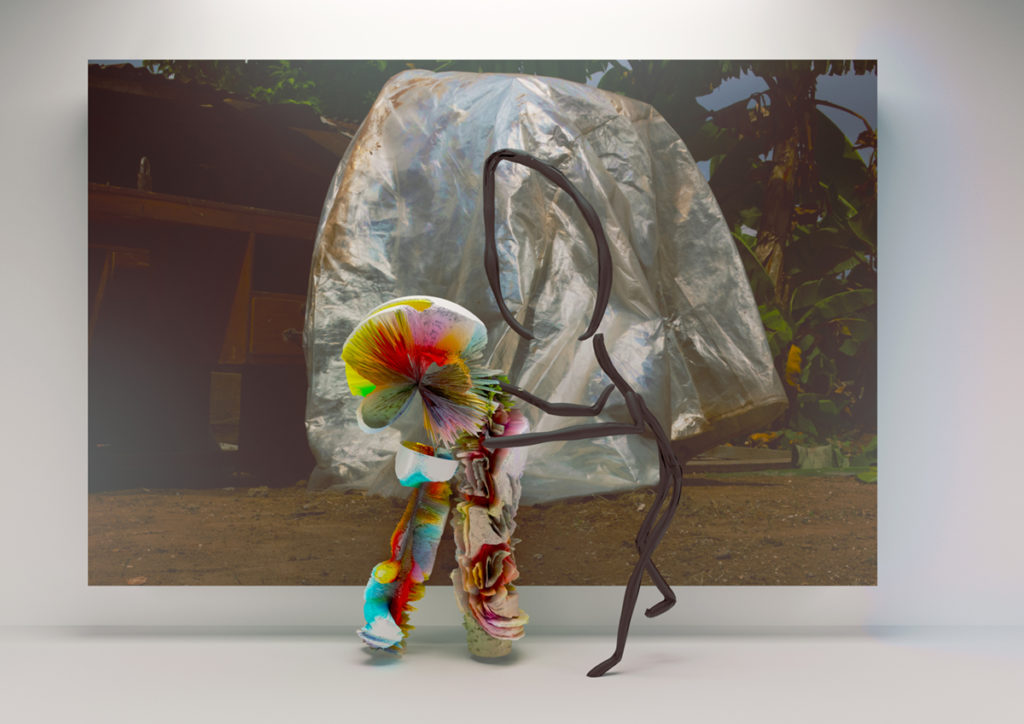

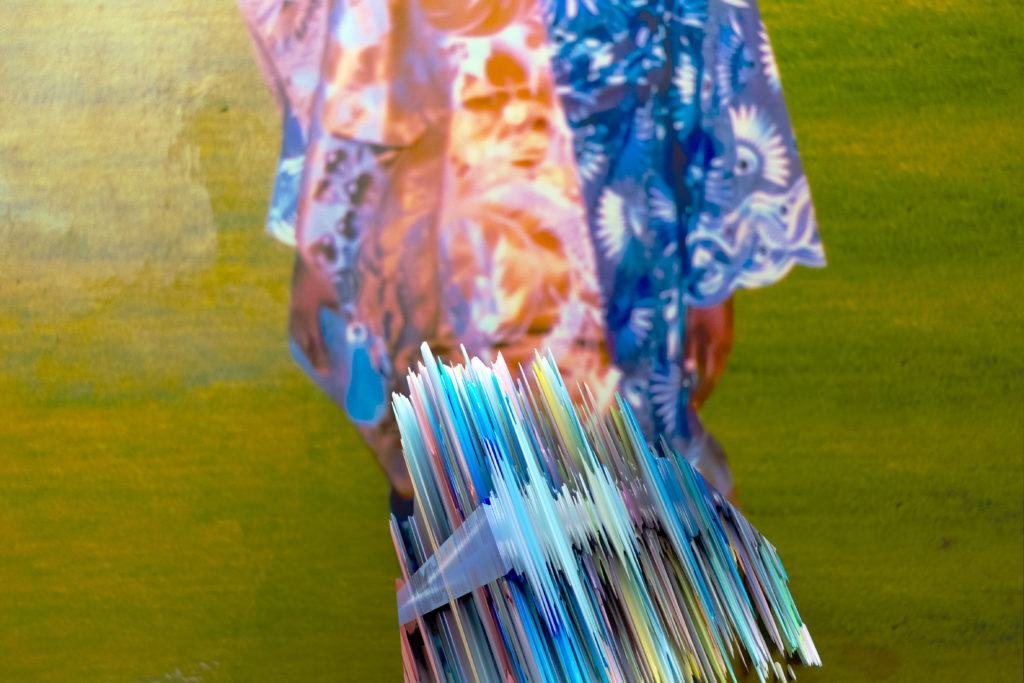
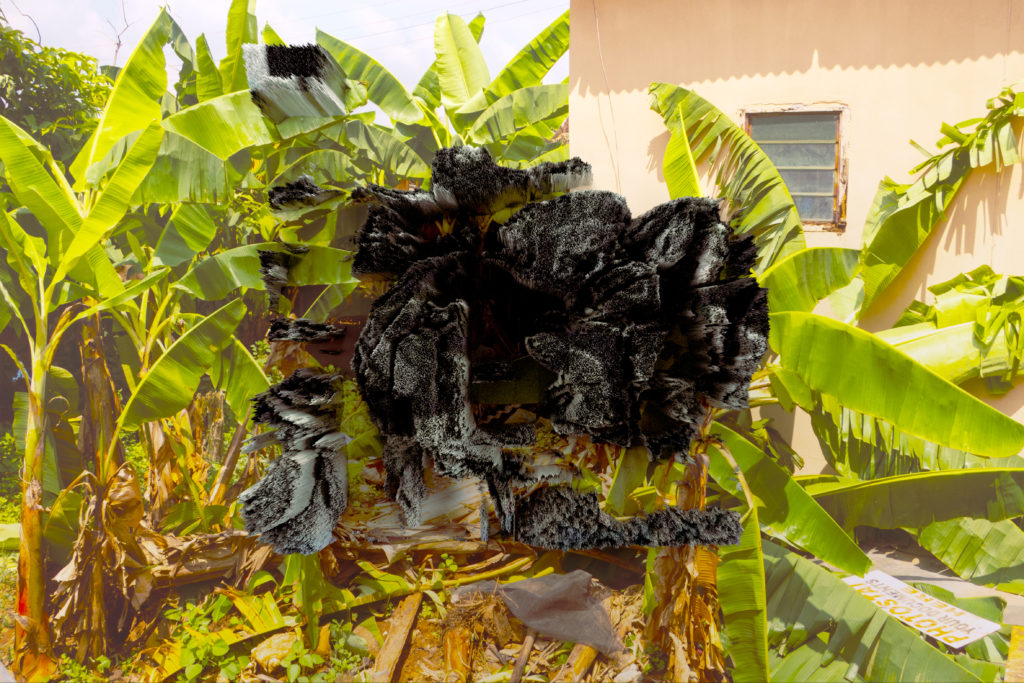
Computational explorations of the space between western and non-western ontology
Transhumanist ideology of a singular ontological history implies a determined “post-human” future. Active colonial legacy and extractive economies are bound up in the etymological architecture and product infrastructures of programming languages facilitating this development. With a universal ‘morality’ built from this same ontological history, there is no room for indigenous cosmologies of thought in a virtual “post-humanity” created from data of the living and dead. This artistic research asks how can alternative cosmologies be better represented within the virtual “metaverse”.
Red Earth appropriates these methodologies to synthesise new pathways between divergent cosmologies and new codices from West African thought.
The project has two points of origin: 1. Dante’s allegory of falling autumn leaves; his insistence that each damned soul is individual helps to think about synthesising data of the living and dead in the Covid era. 2. Difficulty with arguments in Chinua Achebe’s 1977 essay, An Image of Africa, where Achebe neglects to critique the power structure holding up the very ‘morality’ he appeals to while denouncing the racism of Conrad’s Heart of Darkness, nor does he mention Conrad’s metaphysical alienation.
This is addressed through a personal narrative exploring a lack of touch with one’s ‘home’ due (in part) to the current moment. Machine learning is used in a controlled manner to translate an original work of prose written by Michael Salu into a visual data topography. Inspired by Yoruba oratorical thought and traditional manifestations within physical objects, this data is used as raw material to sculpt a series of virtual totems, geological sculptures for a codex, distilling the exchange and visualising the connection between text and data, colonial and inherent language. These make one part of a diptych of forms.
There is a process of interpretation between this diptych of forms. The translation process reveals the possibility of extractions or distillations that can be used as an ‘ore’ to begin exploring alternative codices within the “metaverse”. Data derives directly from the tension between one’s western and native ontologies and physical and digital language. The physical, namely, the body and its gestural functions, significant in manifesting the oratorical beginnings of Yoruba thought and religion versus Christianity deployed as a colonial weapon and wholeheartedly adopted by many Nigerians. This project aims to ask what of the physicality of language; voice, form, gesture and touch as seen through Yoruba, can be re-imagined in a virtual afterlife.
The process begins with a series of photographs taken just before and during Covid, inspiring an original book-length work of prose that explores the metaphysical dissonance from existing between virtually and geographically disparate realities. This prose forms the central panel or vertebrae of this project. Subsequent translations from text sections provide enough data to create meshes detailed enough to mould into virtual (physical) sculptures.
The outcome of this process intimates the beginnings of new manifestations of language in an open-world virtual context, beyond the traditionally figurative, with the potential to develop new codices for equitable knowledge exchanges between cosmologies of thought, between post-human and humus.
